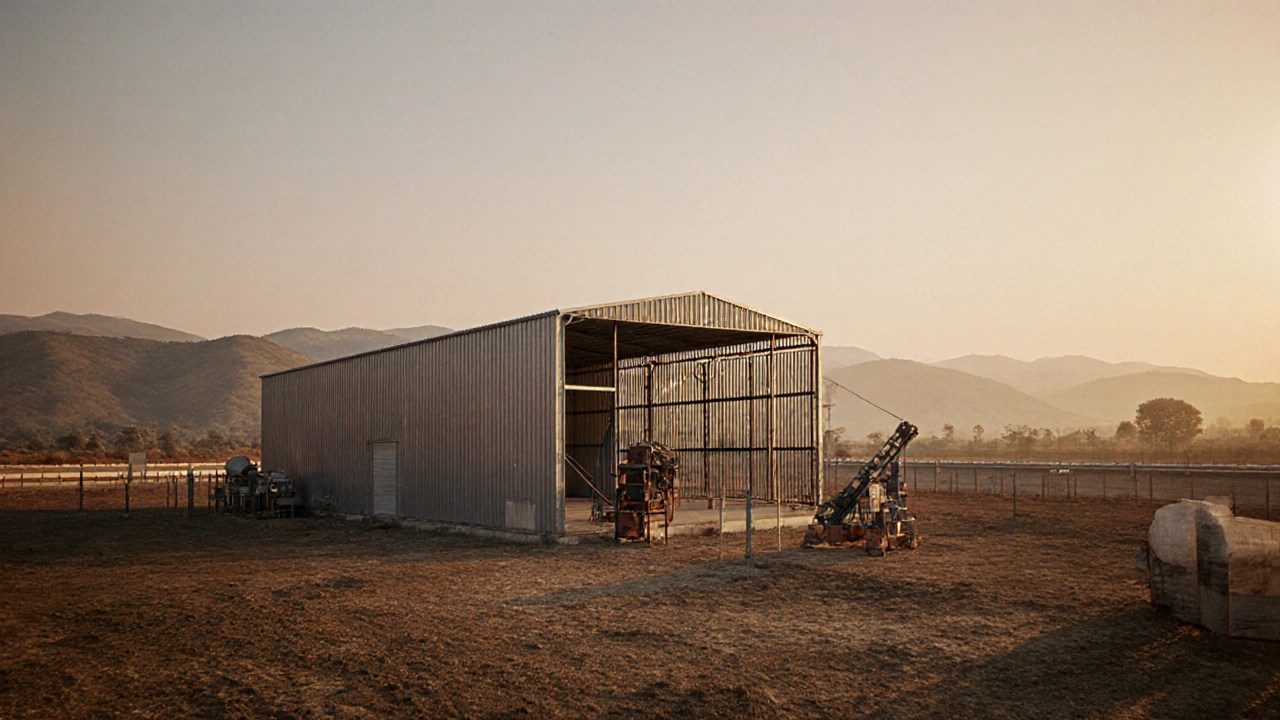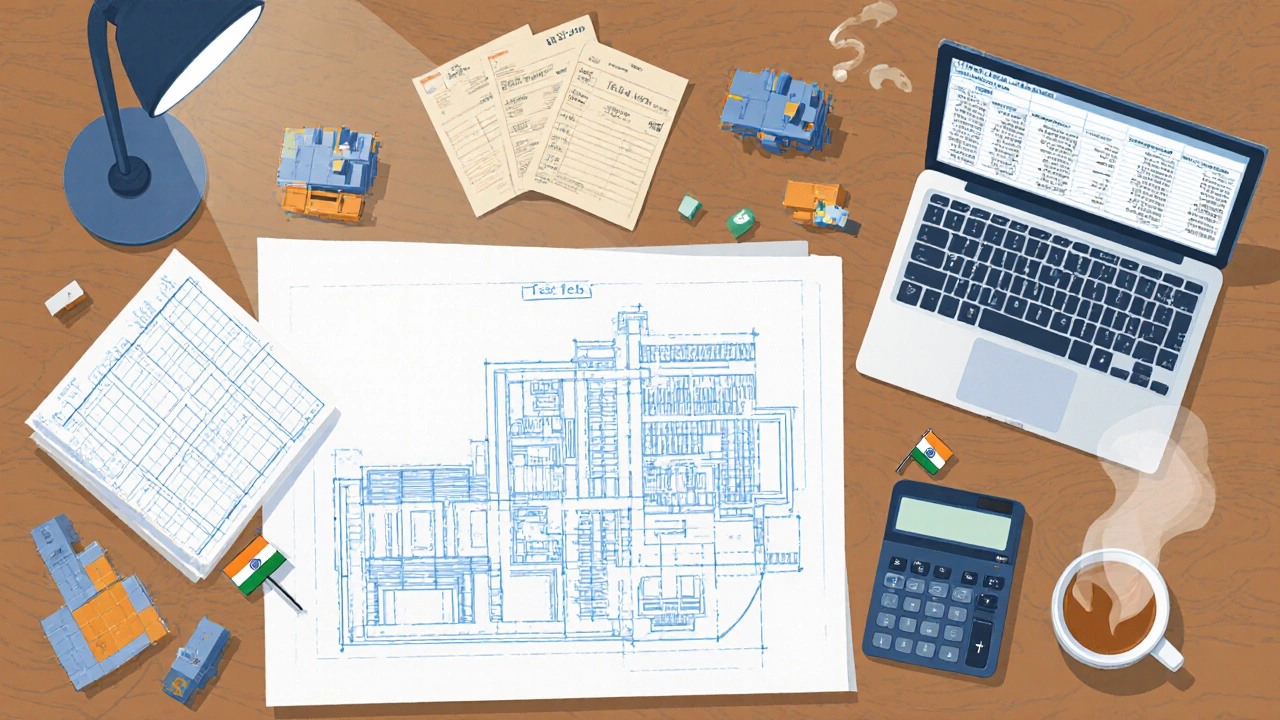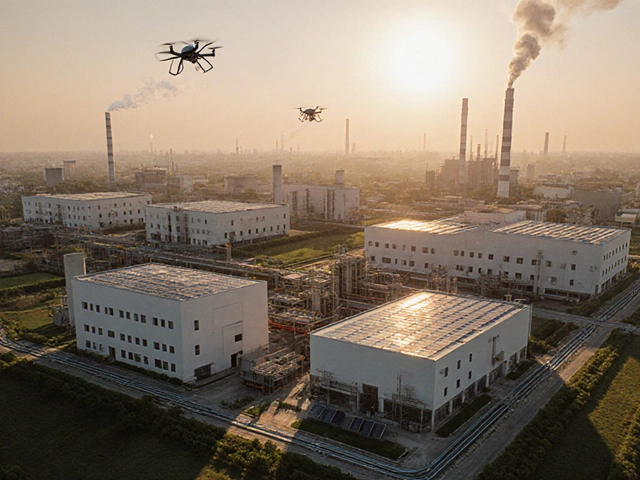Small Factory Cost in India: Detailed Breakdown & Budget Guide

Small Factory Cost Estimator
Estimated Cost Breakdown
Enter values and click "Estimate Total Cost" to see breakdown
Total Estimated Investment
This estimate includes all major components: land, building, machinery, labor, power, licenses, and working capital.
Key Takeaways
- Starting a small factory in India typically requires INR 30Lakhs to INR 2Crore, depending on industry and location.
- Land and building make up about 40‑50% of total capital, while machinery accounts for 30‑35%.
- Government schemes like PM‑MYRIAD and Credit Linked Capital Subsidy can shave 10‑20% off the upfront spend.
- Accurate budgeting needs a clear list of cost components and a realistic timeline for cash flow.
- Skipping proper licensing or under‑estimating power costs are the most common budget killers.
What is a "small factory" in the Indian context?
When you hear the term small factory is a manufacturing unit with a production capacity generally under 5,000 units per month and a built‑up area up to 5,000sqft, think of a modest workshop that can be set up in a semi‑urban or industrial belt. These units are popular for textiles, food processing, plastics, and basic metalwork because they need less capital than large‑scale plants yet can serve regional markets effectively.
Why India? India is the world’s second‑largest consumer market, offers low labor costs and a growing network of industrial corridors. The mix of cheap raw material access and supportive policies makes it a hotspot for entrepreneurs looking to launch a modest manufacturing hub.

Core Cost Components you can’t ignore
Every small factory budget breaks down into a handful of recurring heads. Below each head is defined once with schema markup; subsequent mentions are plain text.
1. Land Acquisition
Land cost is the price paid for a plot, usually quoted per square metre, and varies widely by state and proximity to logistics hubs. In industrial zones of Gujarat or TamilNadu, you can find rates from INR 2,000 to INR 8,000 per sqft. For a 2,500sqft plot, this translates to INR 50Lakhs‑2Crore.
2. Building & Civil Works
Building cost is the expense of constructing a factory shell, including floors, walls, roof, drainage and basic fire safety. Ready‑made steel structures or pre‑fabricated concrete blocks can bring the spend down to INR 1,200‑1,800 per sqft.
3. Machinery & Equipment
Machinery cost is the outlay for production‑line machines, which differs sharply between sectors (e.g., a small textile loom vs. a food‑grade mixer. Expect INR 10‑40Lakhs for simple setups; CNC machines for metalwork push the figure above INR 1Crore.
4. Labor
Labor cost is the sum of wages, statutory contributions and onsite amenities for workers. In Tier‑2 cities, skilled operators earn INR 15,000‑25,000 per month, while semi‑skilled helpers take INR 8,000‑12,000.
5. Power & Utilities
Power cost is the monthly electricity bill, often the largest operating expense after labor. Small factories typically consume 5‑15kW; at INR 6‑8 per unit, budget INR 30,000‑1Lakhs annually.
6. Licenses, Permits & Compliance
Licenses and permits are registrations needed from state pollution boards, labor offices, and industry‑specific authorities. The total can range from INR 50,000 for a simple food‑processing unit to INR 5Lakhs for a chemical plant.
7. Working Capital
Beyond the one‑time capital, you need cash for raw material purchase, inventory, and day‑to‑day expenses. A safe rule is to keep 3‑6 months of operating costs in the bank, which often equals 20‑30% of total CapEx.
Typical Cost Ranges by Industry (2025)
| Industry | Land + Building | Machinery | Other (Labor, Power, Licenses) | Total |
|---|---|---|---|---|
| Textile (garments) | ₹ 60Lakhs - ₹ 1.2Crore | ₹ 30Lakhs - ₹ 80Lakhs | ₹ 20Lakhs - ₹ 45Lakhs | ₹ 1.1Crore - ₹ 2.1Crore |
| Food Processing (snacks) | ₹ 45Lakhs - ₹ 90Lakhs | ₹ 20Lakhs - ₹ 50Lakhs | ₹ 15Lakhs - ₹ 35Lakhs | ₹ 80Lakhs - ₹ 1.75Crore |
| Plastic Moulding | ₹ 55Lakhs - ₹ 1Crore | ₹ 40Lakhs - ₹ 1.2Crore | ₹ 25Lakhs - ₹ 55Lakhs | ₹ 1.2Crore - ₹ 2.75Crore |
| Metal Fabrication (light) | ₹ 70Lakhs - ₹ 1.5Crore | ₹ 60Lakhs - ₹ 1.5Crore | ₹ 30Lakhs - ₹ 70Lakhs | ₹ 1.6Crore - ₹ 3.3Crore |
Government Schemes that can Trim Your Spend
India runs several incentive programs aimed at small‑scale manufacturers. Leveraging these can reduce the small factory cost India by up to a fifth.
- PM‑MYRIAD: Provides 15‑20% subsidy on plant & machinery for MSMEs in 13 priority sectors.
- Credit Linked Capital Subsidy Scheme (CLCSS): Offers a 15% cash subsidy on technology up‑gradation, useful for replacing old looms or mixers.
- State Industrial Development Corporations: Many states (e.g., Karnataka, Maharashtra) offer land at concessional rates or even 100% waiver for the first 5years.
- Make in India - Cluster Development: Grants for setting up common utility centres (power, water) that lower per‑unit utility bills.
Step‑by‑Step Budget Checklist
Use this checklist as a worksheet to avoid hidden costs.
- Identify the exact location and verify land‑price per sqft.
- Calculate building footprint (incl. future expansion) and apply the local construction rate.
- List every machine needed; request quotes from at least three vendors.
- Project monthly labor headcount; multiply by average wages plus statutory contributions.
- Estimate power draw (kWh) based on machine specs; apply current tariff.
- Gather a catalog of required licenses; note application fees and renewal cycles.
- Add 20‑30% of the sum as working‑capital buffer.
- Cross‑check eligible government schemes; subtract approved subsidies.
- Finalize a cash‑flow timeline: pre‑launch, launch, and first‑year operating phases.
Common Pitfalls & Pro Tips
Even a well‑planned budget can crumble if you overlook these details.
- Under‑estimating land acquisition time. Delays can push land prices up by 5‑10%.
- Choosing the cheapest machinery. Low‑quality equipment often breaks down, raising maintenance costs by 30‑40%.
- Ignoring power backup. A 100kVA diesel generator can cost INR 8‑10Lakhs but prevents production loss.
- Skipping professional help for licensing. A consultant can save weeks and avoid penalties of up to INR 2Lakhs.
- Not accounting for inflation. Adjust all cost estimates by at least 6% for the first two years.
Frequently Asked Questions
What is the minimum capital required to start a small factory in India?
The absolute floor can be as low as INR 30Lakhs if you opt for a lease‑back model, low‑cost land in a Tier‑3 town, and minimal machinery. Most realistic setups, however, start around INR 80Lakhs to cover land, building, and core equipment.
How long does it take to get all the necessary licenses?
Depending on the industry and state, the process ranges from 30days (for a simple food‑processing unit) to 120days for a chemical plant requiring multiple clearances.
Can I finance a portion of the cost through bank loans?
Yes. Most banks offer MSME term loans covering 60‑80% of the total project cost, with interest rates between 9%‑12% per annum. Collateral can be the land or machinery, and government guarantees improve acceptance.
Which states have the cheapest land for a small factory?
States like Madhya Pradesh, Uttar Pradesh, and Odisha often offer land at INR 2,000‑3,500 per sqft in designated industrial parks, especially when you qualify for state‑level incentives.
What are the biggest hidden costs I should watch out for?
Utility spikes (especially power during peak summer), waste‑water treatment fees, and periodic compliance audits can add 5‑10% to the annual operating budget if not planned early.





